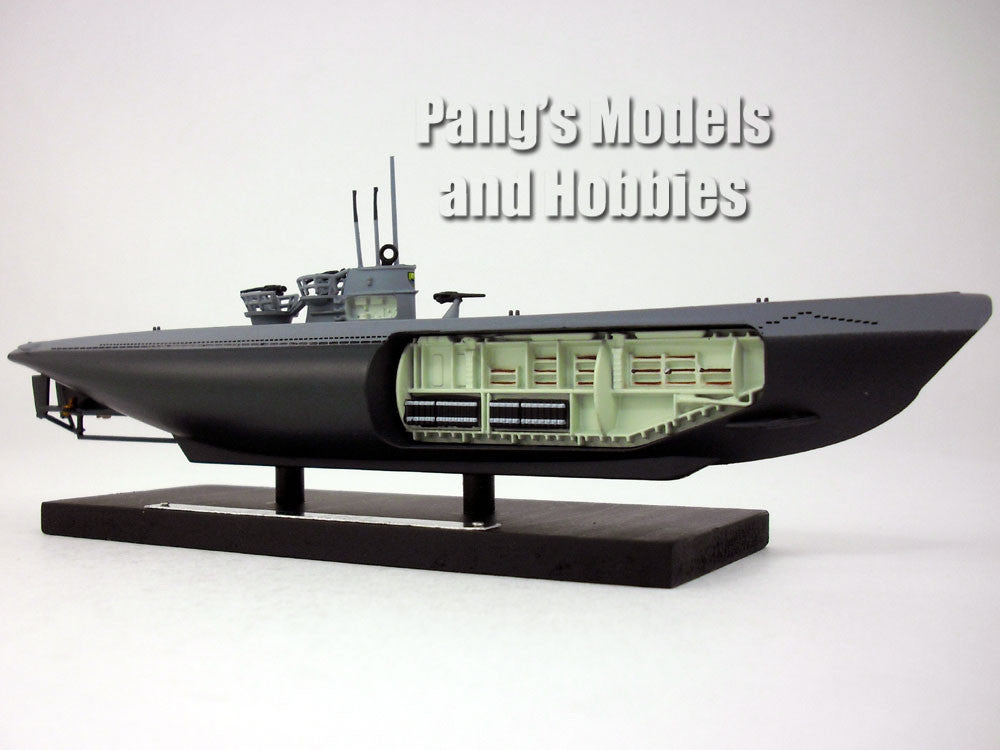German Type XIV Resupply Submarine U-487 1/350 Scale Diecast Metal Model by Atlas
$ 34.99
These models come already assembled and painted out of the box. There is nothing to do or needed other than take them out of the packaging and display them.
The Type XIV U-boat was a modification of the Type IXD, designed to resupply other U-boats. They were nicknamed "Milchkuh/Milchkühe (pl.)" (milk cows). Due to its large size, the Type XIV could resupply other boats with 613 t (603 long tons) of fuel, 13 t (13 long tons) of motor oil, four torpedoes,[2] and fresh food that was preserved in refrigerator units. In addition, the boats were equipped with bakeries, in order to provide the luxury of fresh bread for crews being resupplied. They had no torpedo tubes or deck guns, only anti-aircraft guns.[1]
In 1942, the milk cows allowed the smaller Type VIIC boats to raid the American coast during the "Second Happy Time" of the Battle of the Atlantic. The milk cows were priority targets for Allied forces, as sinking one milk cow would effectively curtail the operations of several regular U-Boats and force them to return home for supplies. Ultra intercepts provided information concerning sailing and routing, and this, coupled with improved Allied radar and air coverage in the North Atlantic, eliminated most of them during 1943. By the end of the war all ten had been sunk. Milk cow duty was especially hazardous; 289 sailors were killed out of an estimated complement of 530–576 men.










